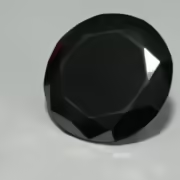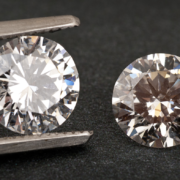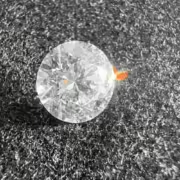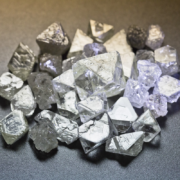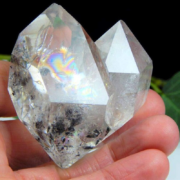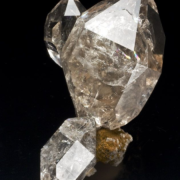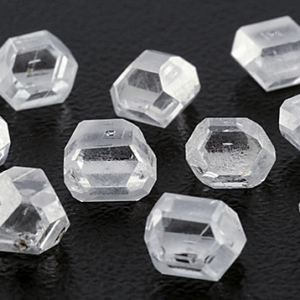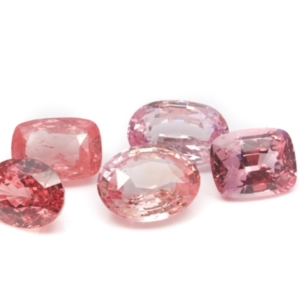Fancy Diamonds: Properties, Uses and Virtues
Diamant Fantaisie: The Star We Don’t Present Anymore…Now In Colour!
Fancy diamonds, symbols of exceptional rarity and charm, fascinate gem lovers with their range of dazzling colors.
Beyond the classic white diamonds, fancy diamonds reveal a kaleidoscope of hues, each with its own charm and distinct personality.
Follow us on a journey to discover the geological formation, historical significance, metaphysical properties and captivating varieties of these exceptional gems.
Explore the different colors, durability, enhancements and care required to appreciate the radiant beauty of fancy diamonds.
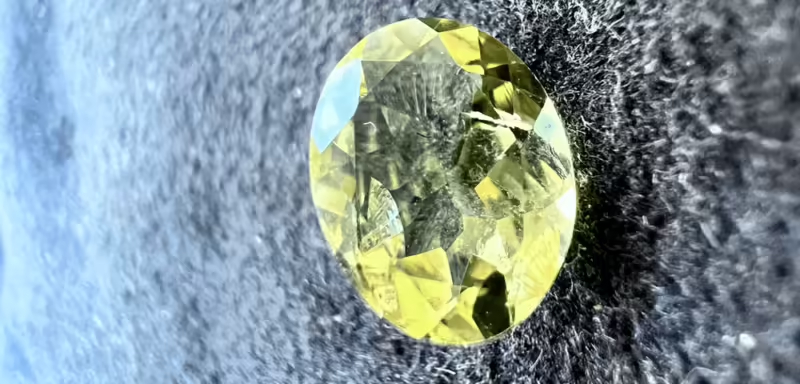
- Fancy Diamond Geological Formation
- Rough Fancy Diamond – Raw Beauty Revealed
- Sources – The Worldwide Reach of Fancy Diamonds
- Historical Significance of the Fancy Diamond – Through the Ages
- Some Famous Fancy Diamonds
- Metaphysical Properties of Fancy Diamonds
- Fancy Diamond Varieties
- Fancy Diamond Colors
- Durability and Wearability of Fancy Diamonds
- Enhancement of Fancy Diamonds – Preserving Natural Beauty
- Diamant Fantaisie Synthétique – Nature in the Laboratory
- Imitations of Fancy Diamonds – Discerning the Genuine
- Fancy Diamond Care – Preserving natural beauty
- Adopting Ethical Diamonds – A Journey to Responsible Choices
Fancy Diamond Geological Formation
Fancy diamonds, like their colorless counterparts, originate from intense pressure and heat deep in the Earth’s mantle.
Over millions of years, unique chemical compositions and trace elements give gems their astonishing hues across the color spectrum.
Thanks to volcanic eruptions, fancy diamonds return to the surface of the Earth, where they are discovered and appreciated for their captivating and varied colors.
Rough Fancy Diamond – Raw Beauty Revealed
The appeal of uncut diamond crystals lies in their raw, natural beauty. Gemologists discover fascinating formations, each with its own unique charm and character.
Octahedral crystals:
The octahedral form is one of the most common diamond crystal formations. Composed of two pyramids joined at the base, this symmetrical shape is celebrated for its intrinsic beauty and distinctive character.
Dodecahedral crystals:
Dodecahedral crystals with twelve faces are another captivating manifestation of uncut diamonds. The combination of sharp edges and smooth surfaces makes these crystals fascinating for gem enthusiasts.
Sources – The Worldwide Reach of Fancy Diamonds
Fancy diamonds are found in various parts of the world, the main sources being South Africa, Russia, Botswana, Canada and Australia. Each location brings unique characteristics to the diamonds, creating a diverse range of gems that captivate the world.
Historical Significance of the Fancy Diamond – Through the Ages
The appeal of fancy diamonds spans centuries, with historical evidence suggesting the appreciation of colored diamonds by ancient civilisations.
However, it is only in modern times that the enchanting world of fancy diamonds has gained worldwide recognition and become prized for their rarity and captivating beauty.
Some Famous Fancy Diamonds
Let’s discover some of the most famous fancy diamonds in history:
The Hope Diamond :
Perhaps one of the most famous diamonds in the world, the Hope Diamond is a 45.52 carat deep blue diamond with a long and intriguing history. It is said to have originated in India and was once part of the French Crown Jewels. Over the centuries, it has passed through the hands of various royal families and private collectors, and is reputed to carry a curse because of its many tales of misfortune and tragedy. Today, the Hope Diamond is on display at the Smithsonian Institution’s National Museum of Natural History, where it continues to captivate visitors with its deep blue hue and illustrious past.
The Rose Star Diamond :
This extraordinary fancy pink diamond weighs an impressive 59.60 carats and is one of the largest and most precious pink diamonds ever discovered. It was mined in Africa and was originally known as Steinmetz Pink Diamond. The Pink Star Diamond was sold at auction for a record price, making it one of the most precious gems in the world.
The Green Diamond of Dresden :
Known for its rare green color, the Dresden Green Diamond is a 41-carat diamond in the collection of the Cabinet Vert in Dresden, Germany. Its unique hue and historical significance make it a precious gem and a symbol of the Dresden State Art Collections.
The Moussaief Red Diamond :
One of the rarest diamonds in the world, the Moussaieff Red Diamond weighs 5.11 carats and is the largest known red diamond. Its bright red hue makes it truly unique and exceptionally precious.
The Wittelsbach-Graff Diamond :
Originally a 35.56-carat blue diamond, the Wittelsbach-Graff Diamond has been cut to 31.06 carats to improve its color and clarity. This famous fancy blue diamond has a rich history, having been part of various European royal collections. Today, it is privately owned and admired for its deep blue hue and exceptional brilliance.
The Pumpkin Diamond :
This rare fancy orange diamond weighs 5.54 carats and is known for its vivid, pumpkin-like hue. It was once owned by Ronald Winston, son of the famous jeweller Harry Winston. The Pumpkin Diamond is highly sought after by collectors for its unique color and remarkable rarity.
The Oppenheimer Blue Diamond :
This magnificent blue diamond weighs an impressive 14.62 carats and is named after its former owner, Sir Philip Oppenheimer. It is one of the largest and most precious blue diamonds in the world and was sold at auction for a record price. Not to be confused with the Oppenheimer diamond, a 253-carat rough yellow diamond on display at the Smithsonian Institution.
Metaphysical Properties of Fancy Diamonds
According to metaphysical beliefs, fancy diamonds are associated with different properties depending on their individual colors. Each color is reputed to convey a unique energy and promote emotional balance, fostering inner harmony and personal growth.
These beliefs add to the appeal of fancy diamonds and their significance as treasured gems.
Generally speaking, diamonds are associated with clarity, illumination and purity of spirit. They are thought to enhance the wearer’s inner strength, bring positive energy and amplify their aura.
Fancy Diamond Varieties
Delving into the sub-varieties requires a deeper understanding of their chemical structure and the presence of nitrogen atoms, or boron, making it a complex subject better suited to experts in the field of diamond science. In this article, we will not consider Fancy Diamonds as having varieties.
Fancy Diamond Colors
Fancy diamonds fascinate with their captivating colors, offering a wide spectrum from vivid to subtle hues.
Fancy diamond shades generally range from yellow to brown, more rarely from green to pink, blue and black. Only very rarely will you find red or purple.
Many commercial or popular names have been used to describe sought-after shades such as..:
- Champagne Diamonds
- Canary Yellow Diamonds
- Cognac Diamonds
- Pink Champagne Diamonds
- Lavender Diamonds
- Mint Green Diamonds
- Salt and Pepper Diamonds
- Steel Grey Diamonds
- and many others !
Durability and Wearability of Fancy Diamonds
Like colorless diamonds, fancy diamonds are among the hardest materials known, scoring a perfect 10 on the Mohs scale.
This exceptional hardness ensures their lasting beauty and makes them an ideal material for different types of jewellery. Their remarkable durability means they can be enjoyed and worn throughout life.
Enhancement of Fancy Diamonds – Preserving Natural Beauty
Fancy diamonds, part of the prestigious club of “Precious Stones” along with emeralds, rubies and sapphires, undergo various improvements to enhance their appearance and therefore their value.
Although a small percentage of gem-quality diamonds receive treatments, they are used for specific purposes, such as changing the color or improving clarity.
- Color Enhancements :
Irradiation: By subjecting diamonds to controlled irradiation, a range of colors can be obtained, including captivating hues such as green, blue, brown, yellow and black. This process can be accompanied by annealing, which further influences the color of the diamond.
High Pressure, High Temperature (HPHT) : Using state-of-the-art technology similar to that used to grow synthetic diamonds, HPHT treatment can work wonders, transforming brownish diamonds into colorless gems or producing captivating hues such as yellow, green, pink, blue and orange-yellow.
Annealing: Thanks to precise heating and cooling, the color of a diamond can be transformed into exquisite shades such as brown, orange or yellow. This treatment allows a captivating series of color changes, from blue to green to brown and yellow, as desired.
Coatings: Diamonds with a colorless or near-colorless appearance can undergo silica coatings to reveal a range of fancy, natural-looking colors. This technique produces a breathtaking range of shades, including pinks, oranges, yellows, blues and purples. However, it is important to note that these coatings are not permanent and can be affected when the jewellery is repaired or polished.
- Clarity enhancements :
Fracture Filling: One of the most common treatments, this technique involves injecting a glass-like substance into the fractures of a diamond, thereby improving its clarity. Although successful, this treatment requires careful handling, as the filling can be vulnerable to damage during repairs or cleaning.
Laser drilling: Thanks to the precision of lasers, diamond manufacturers can delicately remove or lighten dark inclusions by creating small perforations. Additional treatments with bleach or acid can be applied to further improve clarity. Although this process enhances the diamond’s commercial appeal, the laser-drilled hole becomes a unique clarity feature and could be filled with foreign material.
KM Laser: In this case, the dark inclusions are heated by the KM Laser, creating small fractures. The acid is then used to reach the inclusions through these fractures. This technique leaves a small, zigzag-shaped fracture, but is generally difficult to detect.
Diamant Fantaisie Synthétique – Nature in the Laboratory
Laboratory-manufactured fancy diamonds have emerged as ethical and sustainable alternatives to their natural counterparts. These synthetic diamonds have the same chemical and physical properties as natural fancy diamonds, making them indistinguishable to the naked eye.
At a time when consumers are looking for environmentally responsible choices, laboratory-made fancy diamonds offer a conscious and affordable option for jewellery enthusiasts.
Imitations of Fancy Diamonds – Discerning the Genuine
Because of the rarity and value of fancy diamonds, imitations are common on the market. From coloured glass to synthetic gemstones, such as coloured cubic zirconia or colored moissanite, can be used to imitate the colors of fancy diamonds.
To guarantee authenticity, buyers should purchase fancy diamonds from reputable, certified jewellers with expertise in colored diamonds.
Fancy Diamond Care – Preserving natural beauty
Taking care of diamond jewellery ensures its lasting beauty and brilliance. Follow these steps to keep your diamonds sparkling for generations to come.
Diamond jewellery care guide :
- Gently clean your diamond jewellery with mild soapy water and a soft brush or cloth. Avoid aggressive chemicals and abrasive materials to protect precious metal settings.
- Keep your diamond jewellery away from chlorine, bleach and other aggressive chemicals that can damage the metal and the diamond itself.
- Store your diamond jewellery separately from other precious stones and metals to avoid scratches. Because of its perfect hardness, diamonds can easily damage other materials. Consider using soft pouches or individual compartments in a jewellery box for extra protection.
- Don’t forget to separate diamonds from their congeners, as diamonds can easily be scratched!
- Protect your diamond jewellery from violent shocks during physically demanding activities or sports to avoid chipping or damage.
- Regularly check the claws holding the diamond in place and quickly repair any loose claws to avoid losing the diamond.
By following these guidelines, your diamond jewellery will remain dazzling and well protected for many years.
Adopting Ethical Diamonds – A Journey to Responsible Choices
The diamond industry has made significant efforts to address ethical concerns related to diamond mining practices. The term “conflict-free diamonds” became widely known after the release of the film “Blood Diamond”, which highlighted the financing of civil wars by the diamond trade.
Although the Kimberley Process aims to prevent conflict diamonds from entering the world market, there are still challenges to be met to ensure fully ethical practices in diamond sourcing.
To find out more, please visit the page dedicated to ethical diamond practices.
